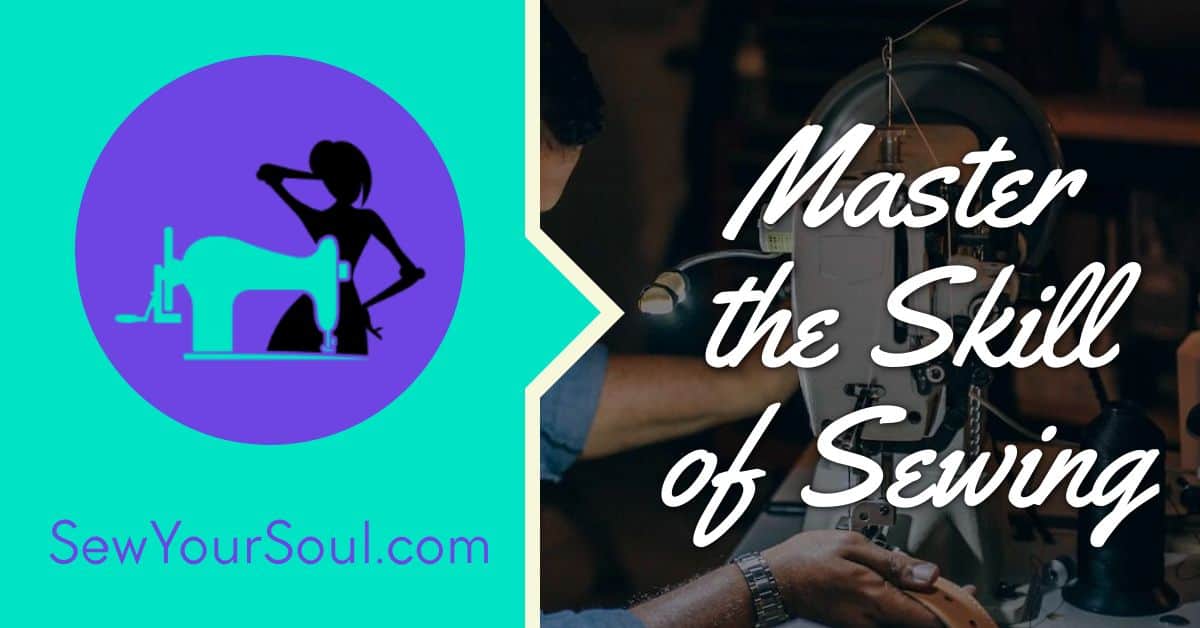Are you a craft enthusiast looking for a new hobby? If so, you may have considered knitting or sewing. Both of these activities offer a creative outlet and the opportunity to make something beautiful with your own hands. In this article, we will explore the similarities and differences between knitting and sewing, helping you decide which one is the best fit for you. Whether you’re a beginner or an experienced crafter, read on to discover the unique charms and challenges of these two popular pastimes.
When it comes to knitting, there’s something truly magical about transforming a simple ball of yarn into a cozy scarf or a stylish sweater. Knitting involves using two knitting needles to create interlocking loops of yarn, resulting in a stretchy and flexible fabric. It’s a versatile craft that allows you to create a wide range of items, from clothing to accessories to home decor. In this article, we’ll delve into the techniques, tools, and materials used in knitting, as well as the benefits and challenges of this beloved craft.
On the other hand, if you prefer precision and attention to detail, sewing might be the perfect craft for you. Sewing involves stitching fabric pieces together using a needle and thread or a sewing machine. It allows you to create custom garments, home textiles, and accessories with a professional finish. In this article, we’ll explore the world of sewing, from essential sewing techniques to the different types of sewing machines available. Whether you’re interested in fashion design or simply want to repair or alter your clothes, sewing offers endless possibilities for creativity.
Knitting vs Sewing: A Comparison
When it comes to crafting, two popular skills that often come to mind are knitting and sewing. Both of these crafts have their own unique qualities and offer a variety of creative opportunities. In this section, we will compare knitting and sewing to help you understand the differences between these two beloved crafts.
Knitting: A World of Versatility
Knitting is a craft that involves creating fabric by interlocking loops of yarn with specialized knitting needles. One of the key advantages of knitting is its versatility. With just a few basic stitches, you can create a wide range of items, from cozy scarves and warm sweaters to intricate shawls and delicate lace patterns.
Knitting also allows for a great deal of customization. You have the freedom to choose from a vast array of yarns in different textures, colors, and weights, giving you endless possibilities for your projects. Additionally, knitting is a portable craft, allowing you to take your project with you wherever you go and work on it in your spare time.
Sewing: The Art of Precision and Detail
In contrast, sewing involves joining fabric pieces together using a needle and thread or a sewing machine. The beauty of sewing lies in its precision and attention to detail. Whether you’re stitching a garment, creating home decor, or making accessories, sewing offers the opportunity for meticulous craftsmanship.
Sewing also provides a wider range of techniques than knitting. From basic hand stitches to advanced machine stitching, there are countless methods to explore and master. Sewing allows you to work with various fabrics, trims, and embellishments, giving you the ability to bring your creative visions to life with intricate details.
Choosing the Right Craft for You
Deciding between knitting and sewing can be a tough choice, especially if you are new to crafting. Consider your personal preferences and the types of projects that excite you. If you enjoy working with yarn and creating versatile items, knitting might be the perfect fit for you. On the other hand, if precision and attention to detail are more your style, sewing could be the craft for you.
Ultimately, the choice between knitting and sewing comes down to your personal interests, the types of projects you want to create, and the skills you want to develop. Whether you choose knitting or sewing, both crafts offer a world of creativity and endless possibilities. So, dive in, embrace your inner crafter, and enjoy the journey of creating beautiful handmade items that you can be
History and Origins of Knitting
Knitting, a craft that has stood the test of time, has a rich and fascinating history. It is believed to have originated in the Middle East, dating back as far as the 3rd century AD. Knitting was initially used to create garments for protection against the cold.
The craft spread across Europe during the Medieval period, becoming a popular pastime among both men and women. In fact, knitting guilds were formed, and techniques and patterns were shared among members. As knitting became more widespread, it also became a means of self-expression and a way to showcase one’s creativity.
During the late 17th century, knitting reached its peak of popularity in Europe, particularly in England and Scotland. Knitted stockings were in high demand, and the craft became a source of income for many families. It was during this time that knitting machines were invented, revolutionizing the industry.
Knitting remained popular throughout the following centuries, experiencing various ups and downs in popularity. However, in recent years, knitting has experienced a resurgence in interest, with people of all ages picking up the craft as a way to relax, express their creativity, and make unique, handmade items.

The origins of knitting are quite different from sewing, another popular craft. Sewing can be traced back even further, dating back to the prehistoric era. Sewing initially used animal bones, ivory, and antlers as needles, along with sinew or animal tendons as thread. As civilizations progressed, sewing techniques evolved, and more advanced tools such as metal needles were developed.
Both knitting and sewing have played significant roles in history, providing warmth, self-expression, and functionality.
Now that you understand the history and origins of knitting, let’s dive deeper into the techniques and tools involved in this beloved craft.
History and Origins of Sewing
Sewing, a craft that has been around for centuries, holds a rich and fascinating history that dates back to ancient times. From humble beginnings to sophisticated techniques, sewing has played a crucial role in shaping our lives and expressing our creativity.
Ancient Beginnings
« Discover the Surprising Secret to Perfect Haircuts: Why Sewing Scissors Are the Ultimate Game-Changer
What Happens to Sewing Bee Clothes? The Shocking Truth Revealed »
Sewing can be traced back to around 20,000 years ago when our ancestors used animal sinews and bones as makeshift needles and thread. They relied on this technique to mend animal hides and create clothing to protect themselves from the elements.
The Rise of Embroidery
As civilizations flourished, so did the art of embroidery. Originating in ancient China, India, and Egypt, embroidery evolved from simple stitching to intricate designs adorned with precious jewels and metallic threads. It was primarily used to embellish clothing, tapestries, and household items, showcasing the creativity and status of the wearer.
The Industrial Revolution and Sewing Machines
The 19th century brought significant advancements to the sewing world. The invention of the sewing machine revolutionized the industry, making mass production of garments possible. Sewing machines allowed for faster, more precise stitching, reducing the time and effort needed to create clothing. This resulted in the growth of the fashion industry and increased accessibility to clothing for people of all social classes.
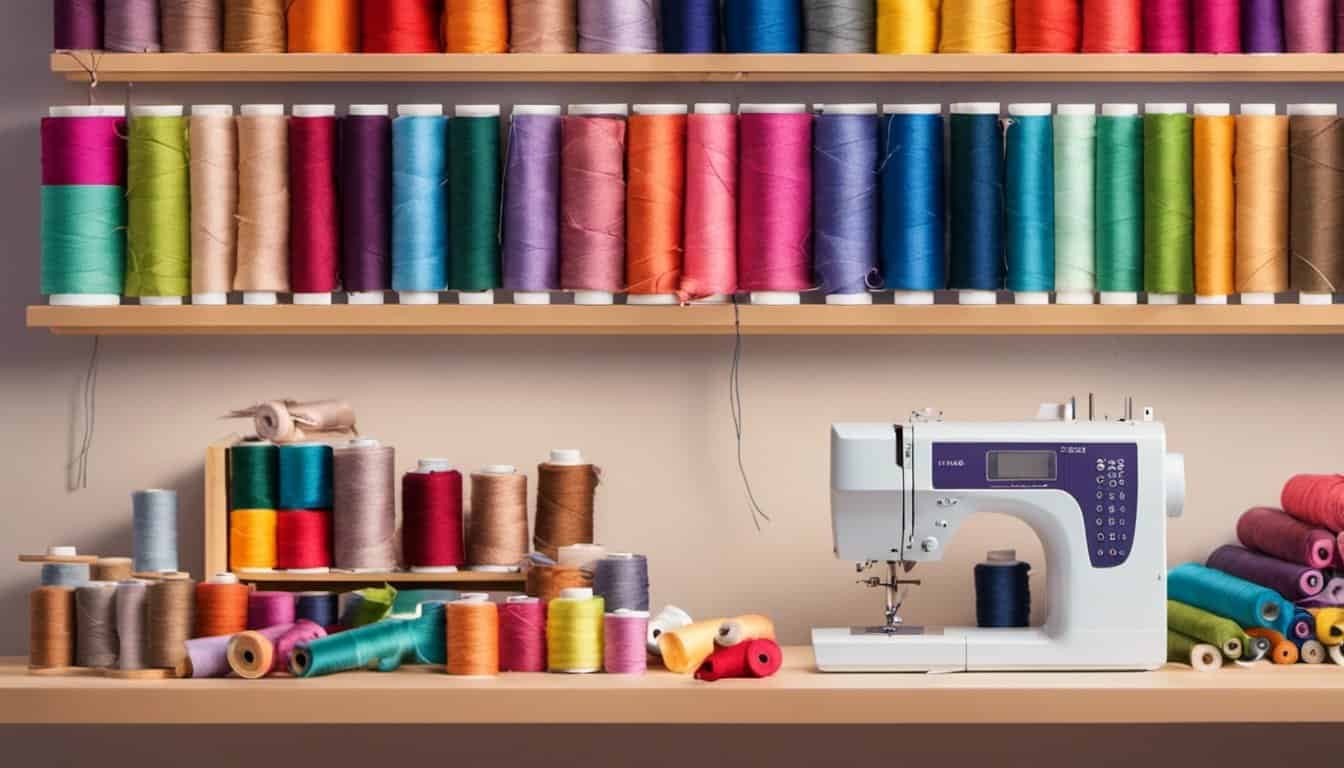
Sewing Today
In today’s modern world, sewing remains popular among crafters, fashion enthusiasts, and those who want to express their individuality through handmade items. While sewing machines continue to be a staple in many households and garment factories, hand sewing techniques are still cherished and practiced by enthusiasts who appreciate the meticulous detail that can be achieved through manual stitching.
Conclusion (No conclusion is needed)
The history and origins of sewing are a testament to the enduring nature of this craft. From its humble beginnings as a necessity for survival to its role in fashion and personal expression, sewing has remained a beloved pastime for countless individuals throughout history. As you explore the world of sewing, you not only immerse yourself in this rich heritage but also unleash your own creativity and bring your unique visions to life. So pick up your needle, thread, and fabric, and let the legacy of sewing guide your hands as you embark on your own stitching journey.
Tools and Equipment Needed for Knitting
When it comes to knitting, you’ll need just a few essential tools and equipment to get started. Whether you’re a seasoned knitter or a beginner, having the right tools can make all the difference in your knitting experience. Here are the must-have items for any knitting project:
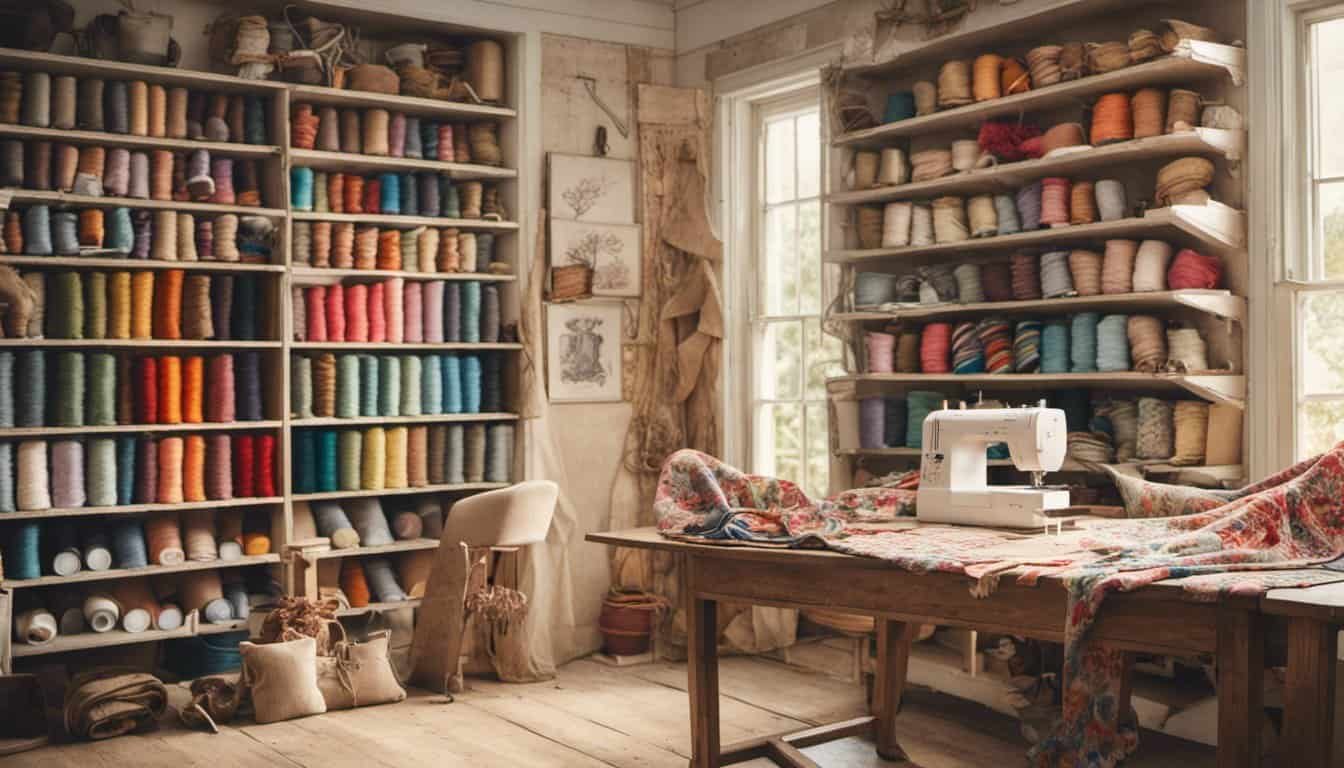
- Knitting Needles: Knitting needles are the primary tool you’ll need for knitting. They come in various materials like bamboo, metal, or plastic, and different sizes to accommodate different yarn weights. Make sure to have a variety of needle sizes on hand to match the requirements of your knitting pattern.
- Yarn: Of course, you can’t knit without yarn! Yarn comes in a multitude of colors, fibers, and weights, giving you endless options for your projects. Whether you prefer wool, cotton, acrylic, or a blend, choose yarn that suits your project and personal preferences. Don’t forget to match the yarn weight to the recommended needle size for best results.
- Scissors: A good pair of scissors is an essential tool for any knitter. You’ll need them to snip your yarn, cut ends, and trim any loose threads. Choose a pair of scissors with sharp blades and comfortable handles for easy and precise cutting.
- Tapestry Needle: A tapestry needle, also known as a yarn needle, is used for weaving in loose ends and seaming knitted pieces together. Look for a blunt-ended needle with a large eye for threading yarn through.
- Stitch Markers: Stitch markers are small rings or clips that help you keep track of specific stitches or pattern repeats. They slide onto your needle and can be easily moved as you progress through your knitting project. Having a few stitch markers on hand can save you from counting stitches repeatedly.
- Row Counter: A row counter is a handy little tool that helps you keep track of your rows or pattern repeats. It can be a physical device or an app on your phone. Using a row counter eliminates the need for guesswork or keeping notes, ensuring accuracy in your knitting.
Having the right knitting tools and equipment not only makes your knitting projects more enjoyable but also helps you achieve better results. Make sure to have these essentials in your knitting kit, and you’ll be ready to embark on any knitting adventure!
Now that we’ve covered the tools and equipment needed for knitting, let’s delve into the world of sewing and explore
Tools and Equipment Needed for Sewing
When it comes to sewing, having the right tools and equipment is essential for a successful and enjoyable crafting experience. Whether you’re a beginner or an experienced seamstress, having the right supplies will make a world of difference in the quality and efficiency of your sewing projects. Here are some of the basic tools and equipment you’ll need:
- Sewing machine: A sewing machine is a staple for any serious sewing enthusiast. It allows you to stitch fabric quickly and efficiently, saving you time and effort. Look for a machine that suits your needs and budget, and consider features such as adjustable stitch length, built-in stitches, and automatic threading.
- Needles and pins: Needles and pins are essential for hand sewing. Invest in a variety of sizes and types, such as sharps for general sewing, ballpoint needles for knits, and embroidery needles for intricate stitching. Pins, on the other hand, are used to hold fabric pieces together before sewing and come in different lengths and thicknesses.
- Thread: Thread is the literal backbone of your sewing projects. Choose a high-quality thread that matches your fabric in color and weight. Polyester thread is a popular choice for its strength and durability, but cotton thread works well for natural fibers. Remember to stock up on various colors to match different projects.
- Scissors: Good quality scissors are a must-have for cutting fabric with precision. Invest in a pair of fabric scissors or shears that are sharp and comfortable to handle. Avoid using them for anything other than fabric to maintain their sharpness.
- Measuring tools: Accurate measurements are crucial in sewing. Get yourself a measuring tape for taking body measurements and fabric widths. Additionally, a clear ruler and a set square can come in handy for measuring and marking fabric accurately.
- Marking tools: Marking tools are used to transfer pattern markings onto fabric. Choose from tools like washable fabric markers, tailor’s chalk, or disappearing ink pens. Always test the marking tool on a scrap piece of fabric before using it on your project.
Remember, these are just the basic tools and equipment needed for sewing. As you progress in your sewing journey, you may find yourself exploring more specialized tools such as rotary cutters, seam rippers, or even a dress form. The key is to have a well-stocked sewing kit that caters to your specific needs and preferences.
With these essential tools in
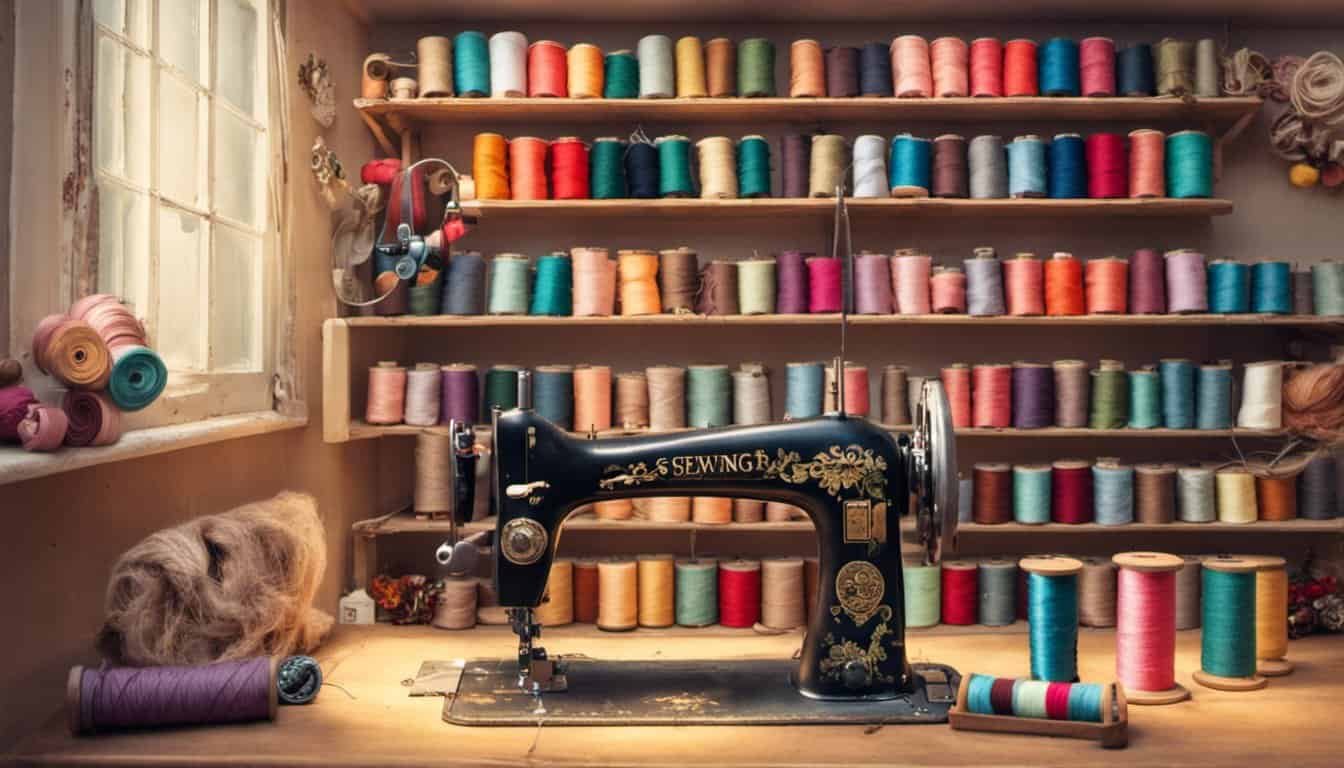
Materials Used in Knitting
Knitting, a beloved craft loved by many, requires a few essential materials to get started. Here’s a breakdown of the key materials you’ll need to embark on your knitting journey:
- Yarn: This is the star of the show, the primary material used in knitting. Yarn comes in a variety of fibers, weights, and colors, allowing you to create endless possibilities. Choose a yarn that suits your project and personal preferences.
- Knitting Needles: These handy tools come in different sizes and materials, such as metal, wood, or plastic. The size of your knitting needles determines the gauge or tension of your stitches. Depending on your project, you’ll select the appropriate needle size.
- Measuring Tape: When it comes to knitting, precision is key. A measuring tape helps you ensure your project is the right size, whether it’s a cozy scarf, a snug hat, or a warm blanket.
- Scissors: Essential for every crafter, a good pair of scissors is a must-have for knitting. You’ll use them to snip yarn, cut ends, and shape your masterpiece.
- Stitch Markers: These little wonders are used to mark specific points in your knitting, helping you keep track of patterns or color changes. They come in various shapes and sizes, making them versatile for different projects.
- Tapestry Needle: Also known as a yarn needle, this blunt-ended needle is used for weaving in loose ends and seaming pieces together. It’s an indispensable tool for finishing touches.
Remember, the quality of your materials can greatly impact your knitting experience and the final result. Invest in good yarn and durable needles to ensure a pleasurable and successful knitting journey.
Materials Used in Sewing
When it comes to sewing, having the right materials is crucial for a successful project. Here are some of the key materials you’ll need:
Fabric
Fabric is the foundation of any sewing project. Whether you’re making a garment, home decor item, or accessory, choosing the right fabric is important. Consider the weight, stretch, and drape of the fabric to ensure it suits your design. Cotton, linen, silk, and knit fabrics are popular choices for sewing.
Needles and Pins
A good set of needles and pins is essential. Sharp needles are used for hand sewing, while machine needles are designed for use with sewing machines. There are different types and sizes of needles for various fabrics and purposes, so be sure to choose the right ones for your project. Pins are used to hold fabric pieces together before stitching.

Thread
Having high-quality thread is key to achieving strong and durable seams. Polyester or cotton thread are commonly used for general sewing, while specialty threads like silk or nylon may be used for specific projects. Choose a thread color that complements your fabric.
Scissors
Invest in a good pair of fabric scissors that are sharp and comfortable to hold. Fabric scissors should only be used for cutting fabric to keep them sharp. It’s also helpful to have small scissors or snips for trimming threads and cutting small details.
Measuring Tools
Accurate measurements are crucial in sewing. A measuring tape is a must-have tool for taking body measurements and measuring fabric. A ruler or measuring gauge is useful for precise measurements and marking.
Marking Tools
Marking tools are used to transfer pattern markings onto fabric. Popular options include chalk, disappearing ink pens, and tailor’s chalk. Choose a marking tool that suits your fabric and won’t leave a permanent mark.
Basic Techniques in Knitting
When it comes to knitting, there are a few fundamental techniques that every beginner should learn. These techniques lay the foundation for all knitting projects and help you create beautiful and intricate designs. Let’s delve into the basic techniques of knitting:

1. Casting On: Casting on is the first step in starting any knitting project. It involves creating loops on your knitting needle to build the foundation row of stitches. There are various casting on methods to choose from, such as the long-tail cast on, the knitted cast on, or the provisional cast on, depending on the project and the desired edge.
2. Knit Stitch: The knit stitch is the most basic stitch in knitting. It creates a smooth, V-shaped pattern on the right side of the fabric and forms the foundation for many other stitch patterns. To knit, insert the needle through the loop, wrap the yarn around the needle, and pull it through to create a new stitch.
3. Purl Stitch: The purl stitch is the reverse of the knit stitch. It creates a bumpy, horizontal pattern on the right side of the fabric. To purl, hold the yarn in front of the work, insert the needle through the loop from right to left, wrap the yarn around the needle, and pull it through.
4. Decreases: Decreases are used to shape your knitting by reducing the number of stitches. Common decrease techniques include the knit two together (K2tog) and the slip, slip, knit (SSK) methods. These decrease stitches create a smooth slope and add shaping to your project.
5. Increases: Increases are the opposite of decreases and are used to add stitches to your knitting, creating shaping or increasing the size of your project. Common increase methods include the yarn over (YO) and the make-one (M1) techniques.

6. Binding Off: Binding off, also known as casting off, is the final step in completing your knitting project. It involves securing the stitches and creating a neat edge. When binding off, you pass stitches over one another until only one stitch remains, which you then cut the yarn and pull through the final loop to secure it.
These basic techniques set the stage for more advanced knitting stitches and patterns. Spend time practicing each technique before moving on to more complex projects. With practice, you’ll become more confident and can start exploring different stitch patterns, colorwork, and shaping techniques.
Now that
Basic Techniques in Sewing
When it comes to sewing, mastering the basic techniques is essential for creating beautiful and professional-looking projects. Whether you’re a beginner or have some experience under your belt, understanding these foundational skills will set you up for success. Let’s dive into the world of basic sewing techniques!
1. Hand Stitching:
Hand stitching is the backbone of sewing and allows for precise and intricate work. It involves using a needle and thread to create various stitches. Some common hand stitches include running stitch, backstitch, slip stitch, and blanket stitch. Each stitch has its own purpose and application, such as joining fabric pieces, hemming, and creating decorative embellishments.
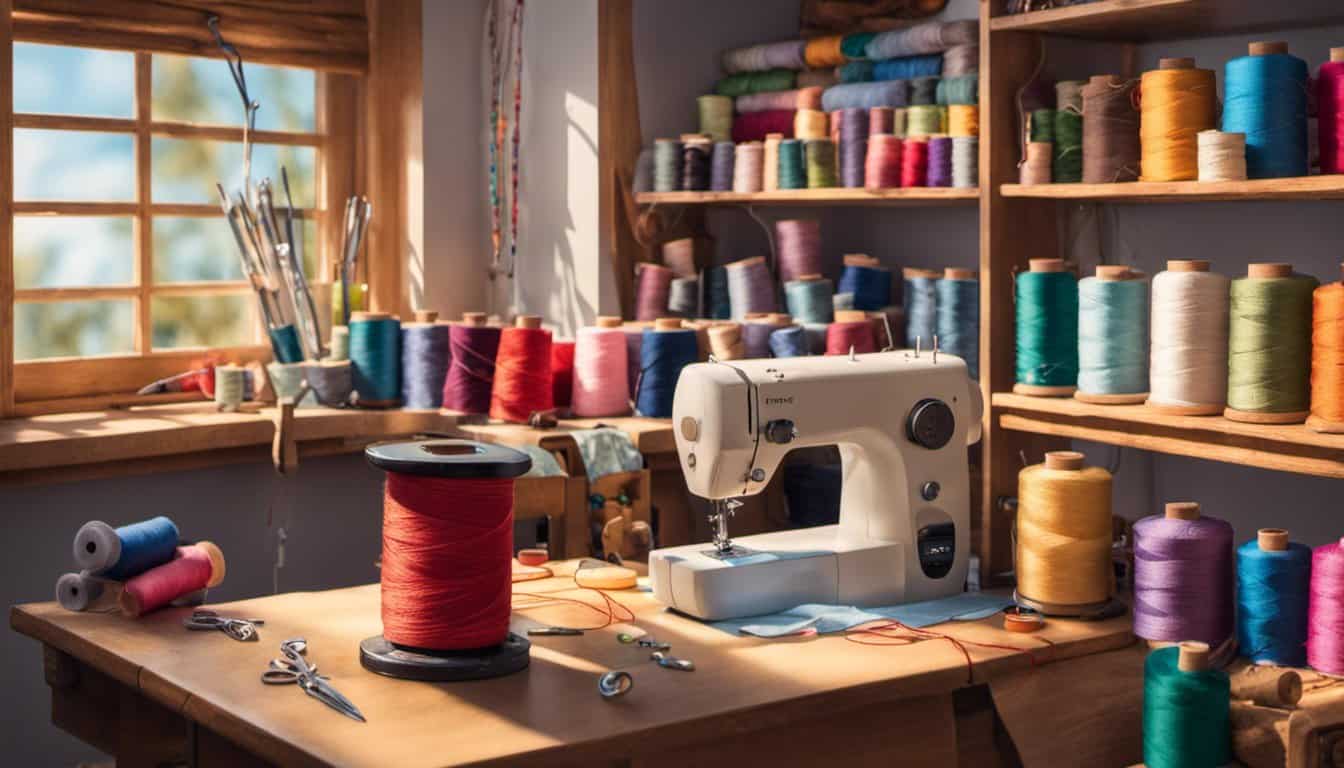
2. Machine Stitching:
Using a sewing machine is a game-changer for speed and efficiency in your sewing projects. Learning how to thread the machine, adjust stitch length and width, and select the appropriate stitch settings are key skills to master. Popular machine stitches include straight stitch, zigzag stitch, and buttonhole stitch. With a sewing machine, you can breeze through larger projects and achieve professional-looking finishes.
3. Seam Finishing:
A properly finished seam ensures that your garment or project withstands wear and tear. Seams can be finished using various techniques such as zigzag stitch, serging, or using a French seam. These methods prevent fraying and create a neat and polished look.
4. Hemming:
Hemming is the process of creating a finished edge on fabric, and it’s essential for garments and home decor projects. There are several techniques for hemming, including machine hemming, blind hemming, and hand hemming. Each technique offers different levels of visibility and durability.
5. Gathering:
Gathering fabric is a technique used to create fullness or decorative effects. You can gather fabric by hand using running stitches, or with the help of a sewing machine by adjusting the tension or using a gathering foot. Gathering is commonly used in creating ruffles, gathers, and pleats.
6. Fastening Techniques:
Fastenings such as zippers, buttons, hooks, and snaps play an important role in garment construction. Learning how to insert zippers, sew buttonholes, and attach various types of closures will open up a world of design possibilities.

Mastering these basic sewing techniques will give you a solid foundation and the confidence to tackle
Benefits of Knitting
Knitting offers a wide range of benefits that make it a beloved craft for many. Whether you’re a seasoned knitter or just starting out, there are numerous advantages to picking up those knitting needles and creating something beautiful. So, why should you give knitting a try? Let’s explore some of the benefits:
- Creativity and Self-Expression: Knitting allows you to unleash your creativity and express yourself through yarn and stitches. From choosing the perfect color combinations to creating intricate patterns, knitting offers endless possibilities for self-expression. You have the power to bring your unique vision to life and create something truly one-of-a-kind.
- Relaxation and Stress Relief: Knitting has long been known for its calming and therapeutic effects. The rhythmic motion of the needles and the soft, soothing feel of the yarn can help you unwind and alleviate stress. Many knitters find it to be a meditative activity, helping them achieve a sense of tranquility and mindfulness.
- Portable and Convenient: One of the great things about knitting is its portability. You can take your knitting project with you wherever you go – on your daily commute, during travel, or while waiting for appointments. It’s the perfect way to make use of your downtime and keep your hands busy.
- Health Benefits: Knitting also offers a range of health benefits. The repetitive hand movements involved in knitting promote dexterity and hand-eye coordination. It can help improve finger strength and flexibility, making it an excellent activity for keeping your hands nimble as you age.
- Gift-Giving and Community: Knitted items make thoughtful and personalized gifts for friends and family. Whether it’s a cozy sweater, a warm scarf, or a pair of cute baby booties, handmade knitted items are always cherished. Moreover, knitting can also connect you with a vibrant and supportive community of fellow crafters, allowing you to share ideas, tips, and inspiration.
Benefits of Sewing
Sewing is not just a hobby; it’s a skill that comes with a plethora of benefits. Whether you’re a beginner or an experienced seamstress, sewing offers numerous advantages that go beyond just creating beautiful garments. Let’s explore some of the benefits of sewing:
Creativity and Self-Expression
Sewing allows you to unleash your creativity and express your unique style through fabric and thread. You have the freedom to choose from countless patterns, colors, and textures to bring your ideas to life. Whether you’re sewing clothing, home decor, or accessories, you have the opportunity to create one-of-a-kind pieces that reflect your personal taste and individuality.
Relaxation and Stress Relief
Engaging in sewing activities can be a calming and therapeutic experience. The repetitive nature of stitching can help to reduce stress and anxiety, providing a meditative effect. As you focus on the rhythm of your needle and thread, the worries of the day tend to fade away, leaving you feeling more relaxed and centered.

Sense of Achievement
There’s a sense of accomplishment that comes with completing a sewing project. From simple repairs to complex garments, seeing the final product and knowing that you made it with your own hands can boost your confidence and self-esteem. It’s incredibly rewarding to wear or use something you’ve created from scratch.
Sustainable and Eco-Friendly
In a time where sustainability is crucial, sewing allows you to be more conscious of your environmental footprint. By making your own clothes or transforming old garments into something new, you contribute to reducing textile waste. Additionally, sewing gives you the power to choose ethically sourced fabrics and materials, creating a more sustainable fashion industry.
Therapeutic and Social Connection
Sewing is not only a solo activity; it can also serve as a way to connect with others. Joining sewing circles, attending workshops, or engaging in online sewing communities can provide a sense of belonging and foster new friendships. Sharing your passion for sewing with like-minded individuals can be an incredibly enriching and fulfilling experience.
Remember, these are just a few of the many benefits sewing has to offer. So grab your needle and thread and explore the world of sewing – you’ll be amazed at the joy and fulfillment it brings to your life!
Stay tuned as we continue to delve into the fascinating world of knitting and sewing, exploring the techniques, tools, and materials that make these crafts so beloved.
Popular Knitting Patterns and Projects
Now that you have a good understanding of the techniques, tools, and materials involved in knitting and sewing, let’s explore some popular knitting patterns and projects that you can try. Whether you’re a beginner or an experienced knitter, there are endless possibilities to create beautiful and functional items with knitting.
- Sweaters and Cardigans: Knitting a cozy sweater or cardigan is a classic project that allows you to showcase your skills. From simple, oversized sweaters to intricate cable knit cardigans, there is a pattern out there for every style and skill level.
- Hats and Beanies: Knitting hats and beanies is a quick and satisfying project. You can experiment with different stitches, colors, and textures to create unique headwear that will keep you warm during the colder months.
- Scarves and Shawls: Scarves and shawls are versatile accessories that can add a touch of style to any outfit. Whether you opt for a simple garter stitch scarf or a lace shawl, knitting these accessories allows you to explore various patterns and stitch combinations.
- Socks and Slippers: Knitting your own socks and slippers is not only practical but also a fun way to add a personal touch to your footwear. You can choose from a variety of patterns, including basic socks, cozy house slippers, or even intricate colorwork designs.
- Baby Items: Knitting for babies is a popular choice among crafters. From booties and hats to blankets and sweaters, there are endless adorable patterns to choose from. These projects also make wonderful gifts for expecting parents or baby showers.
- Amigurumi: If you’re looking to tap into your creativity and make cute, stuffed toys, amigurumi knitting is the perfect choice. You can create adorable animals, characters, or even food items using this technique, which involves knitting in the round and shaping small, three-dimensional figures.
Popular Sewing Patterns and Projects
When it comes to sewing, there are countless patterns and projects that you can choose from to exercise your creativity and create beautiful and functional items. Whether you’re a beginner or an experienced seamstress, there’s something for everyone in the world of sewing. Here are some popular sewing patterns and projects that you might want to try:
- Sweaters and Cardigans: Knitting may be known for its cozy sweaters, but sewing offers a wide variety of patterns for sweaters and cardigans as well. From classic designs to modern and trendy styles, you can create stylish and customized garments to keep you warm and fashionable during the colder months.
- Hats and Beanies: Sewing your own hats and beanies allows you to choose the perfect fabric and design to match your personal style. With a range of patterns available, you can create hats for any occasion and season, from sun hats to warm beanies.
- Scarves and Shawls: A scarf or shawl is not only a practical accessory but also a way to add a touch of style to any outfit. Sewing allows you to experiment with different fabric choices and patterns to create unique and eye-catching scarves and shawls that will keep you cozy and fashionable.
- Socks and Slippers: Who says knitting is the only way to make cozy socks and slippers? Sewing offers patterns for all types of foot coverings, from cute and fluffy slippers to snug and stylish socks. You can even personalize them with fun appliques and embroidery.
- Baby Items: Sewing baby items is a delightful way to create handmade gifts for expecting parents or to prepare for the arrival of your own little one. From adorable onesies and baby booties to soft blankets and bibs, the possibilities are endless.
- Amigurumi: While traditionally associated with crochet, amigurumi can also be sewn using fabric and stuffing. These cute and cuddly stuffed creatures make perfect gifts or charming decorations for your home.
By exploring these popular sewing patterns and projects, you can unleash your creativity and create one-of-a-kind items that reflect your personal style and passion for sewing. Whether you’re crafting a cozy sweater or a whimsical stuffed toy, sewing allows you to bring your ideas to life and experience the joy of handmade creations.
So, grab your fabric, thread, and sewing machine, and let your sewing journey take you
Tips for Choosing Between Knitting and Sewing
If you’re torn between the worlds of knitting and sewing, fear not! Both crafts offer unique opportunities for creativity, relaxation, and self-expression. However, choosing between knitting and sewing can sometimes be a dilemma. Let me offer you some tips to help you make the right decision for your next crafting adventure.
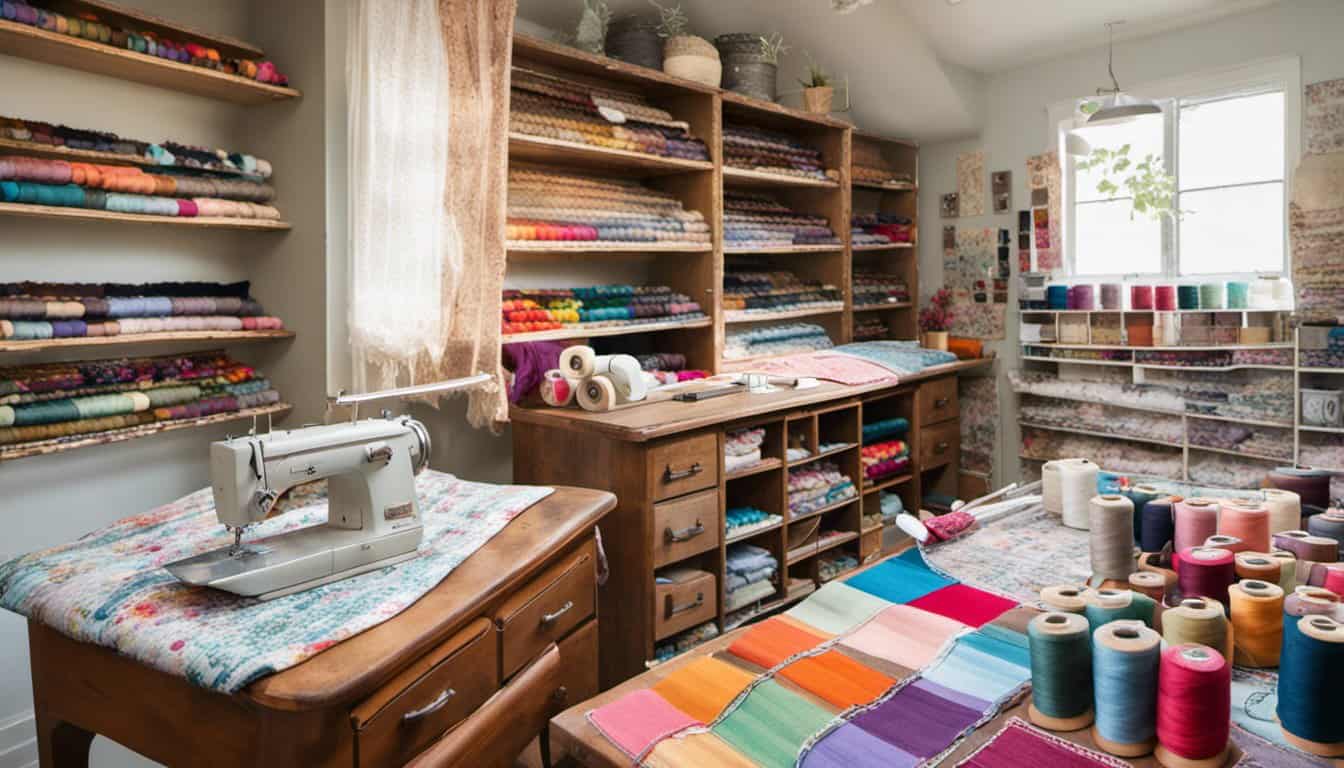
- Consider the purpose: Are you looking to create functional items or decorative pieces? Knitting excels in creating cozy garments like sweaters, hats, and scarves, while sewing allows you to make clothing, home decor, and accessories with precision and detail.
- Assess your patience: Knitting can be a slower process, requiring patience and a steady hand. If you enjoy the meditative rhythm of repetitive motions, then knitting might be your cup of tea. On the other hand, if you prefer a quicker and more immediate outcome, sewing might be more up your alley.
- Think about portability: Do you want to craft on the go or while traveling? Knitting is highly portable, as you only need a pair of knitting needles and a skein of yarn. You can easily knit on a plane, train, or during your lunch break. Sewing, on the other hand, requires more equipment, such as a sewing machine, cutting tools, and a stable workspace, making it less suitable for crafting on the move.
- Consider your skill level: Knitting and sewing both have their learning curves. If you’re a beginner, knitting might be easier to pick up, as it involves a smaller set of techniques and stitches. Sewing, on the other hand, requires more technical knowledge, especially when using machines. However, if you’re up for the challenge, sewing can offer a wider range of possibilities once you’ve honed your skills.
- Explore your interests: Consider your personal interests and what sparks your creativity. If you’re drawn to the world of fashion, sewing allows you to design and create your own garments. If you’re intrigued by the art of textiles and fiber, knitting offers endless possibilities for experimentation and unique textures.
Conclusion: Knitting or Sewing – Which is Right for You?
Now that you have explored the similarities and differences between knitting and sewing, you have a better understanding of these two popular crafts. You have learned about the techniques, tools, and materials used in each craft, as well as the benefits and challenges they present.
Both knitting and sewing have rich histories and have provided warmth, self-expression, and functionality throughout the years. Whether you prefer the rhythmic motion of knitting needles or the precision of a sewing machine, both crafts offer unique opportunities for creativity and personalization.
By understanding the basic techniques of knitting and sewing, as well as the benefits of each craft, you can make an informed decision about which one is right for you. Knitting offers a wide range of patterns and projects, allowing you to create cozy garments and accessories. On the other hand, sewing provides the ability to design and construct custom clothing and home decor items.
Consider your preferences, interests, and goals when choosing between knitting and sewing. Both crafts have their own merits, so embrace the one that resonates with you the most. Whether you become a knitting enthusiast or a sewing aficionado, you’ll find joy and fulfillment in the world of fiber arts.


